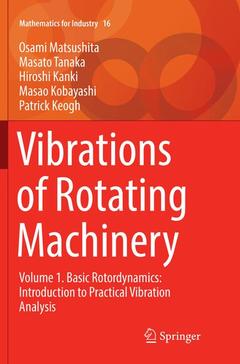Description
Vibrations of Rotating Machinery, Softcover reprint of the original 1st ed. 2017
Volume 1. Basic Rotordynamics: Introduction to Practical Vibration Analysis
Mathematics for Industry Series, Vol. 16
Authors: Matsushita Osami, Tanaka Masato, Kanki Hiroshi, Kobayashi Masao, Keogh Patrick
Language: English
Subjects for Vibrations of Rotating Machinery:
210.99 €
In Print (Delivery period: 15 days).
Add to cartPublication date: 08-2018
Support: Print on demand
210.99 €
In Print (Delivery period: 15 days).
Add to cartPublication date: 05-2017
360 p. · 15.5x23.5 cm · Hardback
Description
/li>Contents
/li>Comment
/li>
Focuses on comprehensive evaluation of three key elements of natural frequency; resonance severity; and stability margin, through the use of examples with figures and tables
Provides a consistent approach to bridge rotor shaft vibrations featuring gyroscopic effects in an inertial coordinate frame and blade vibrations under Coriolis forces acting in a rotating reference frame
Helps to understand applying accurately reduced models to identify the solution of rotor vibration problems
Includes supplementary material: sn.pub/extras




